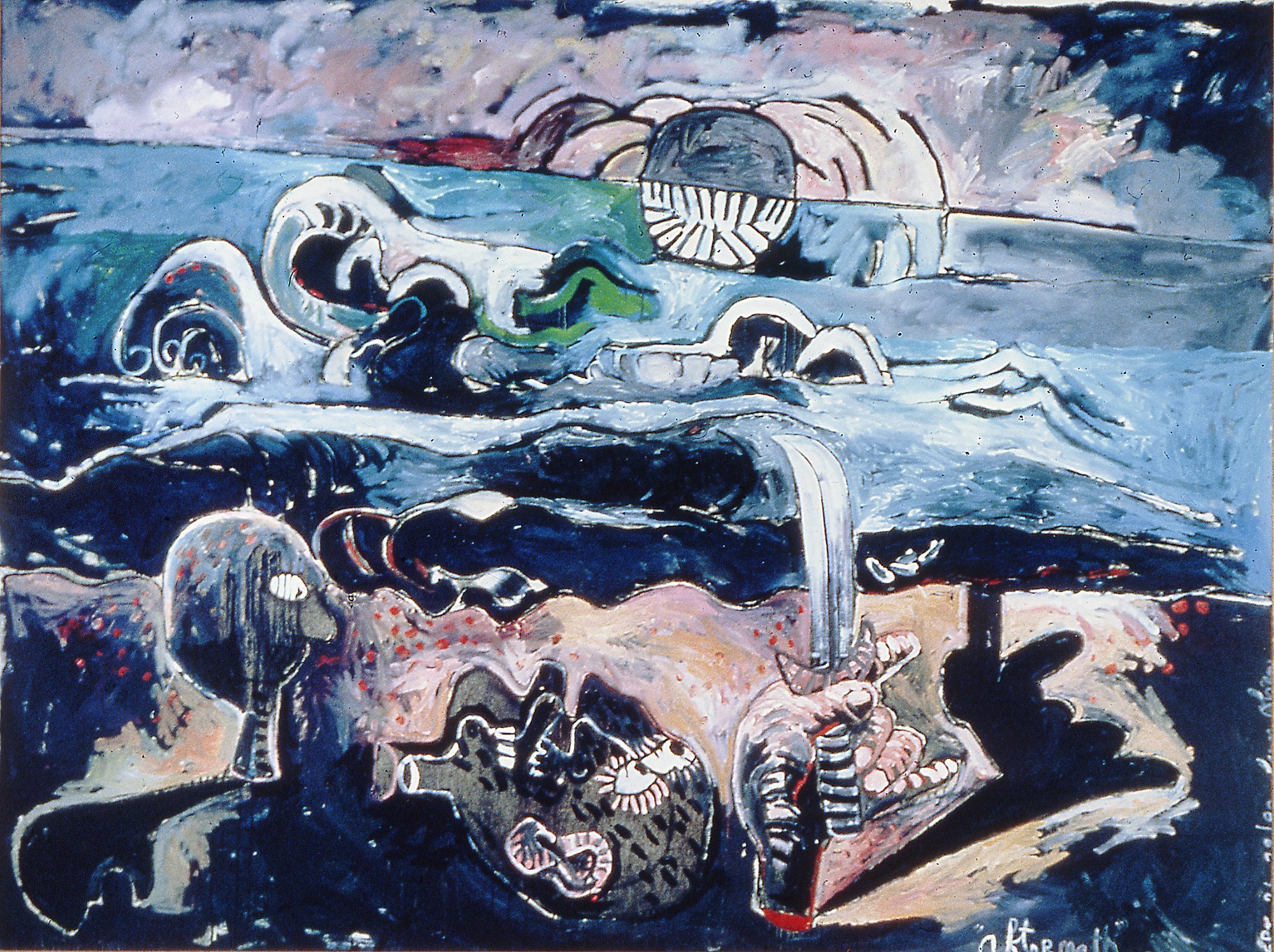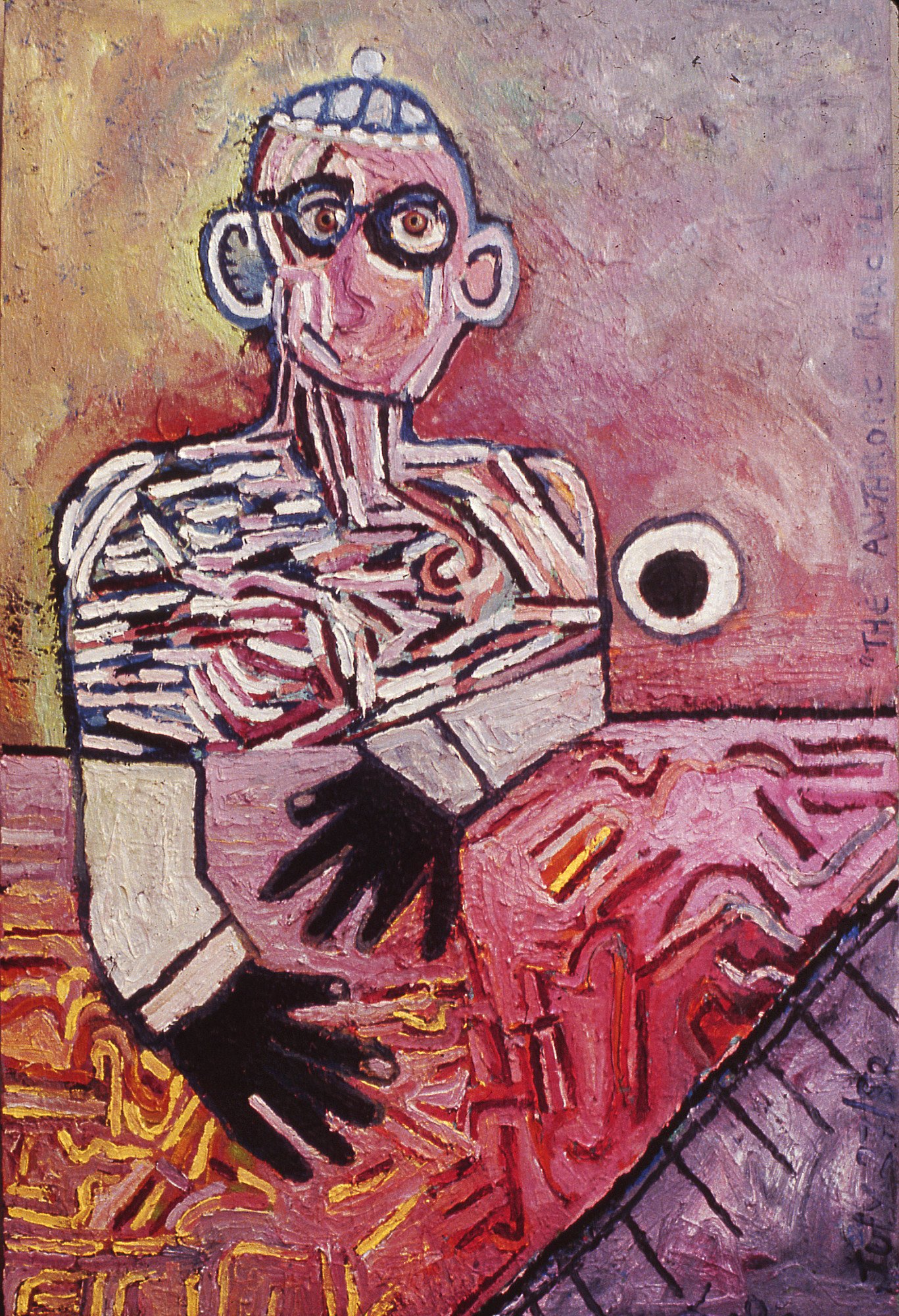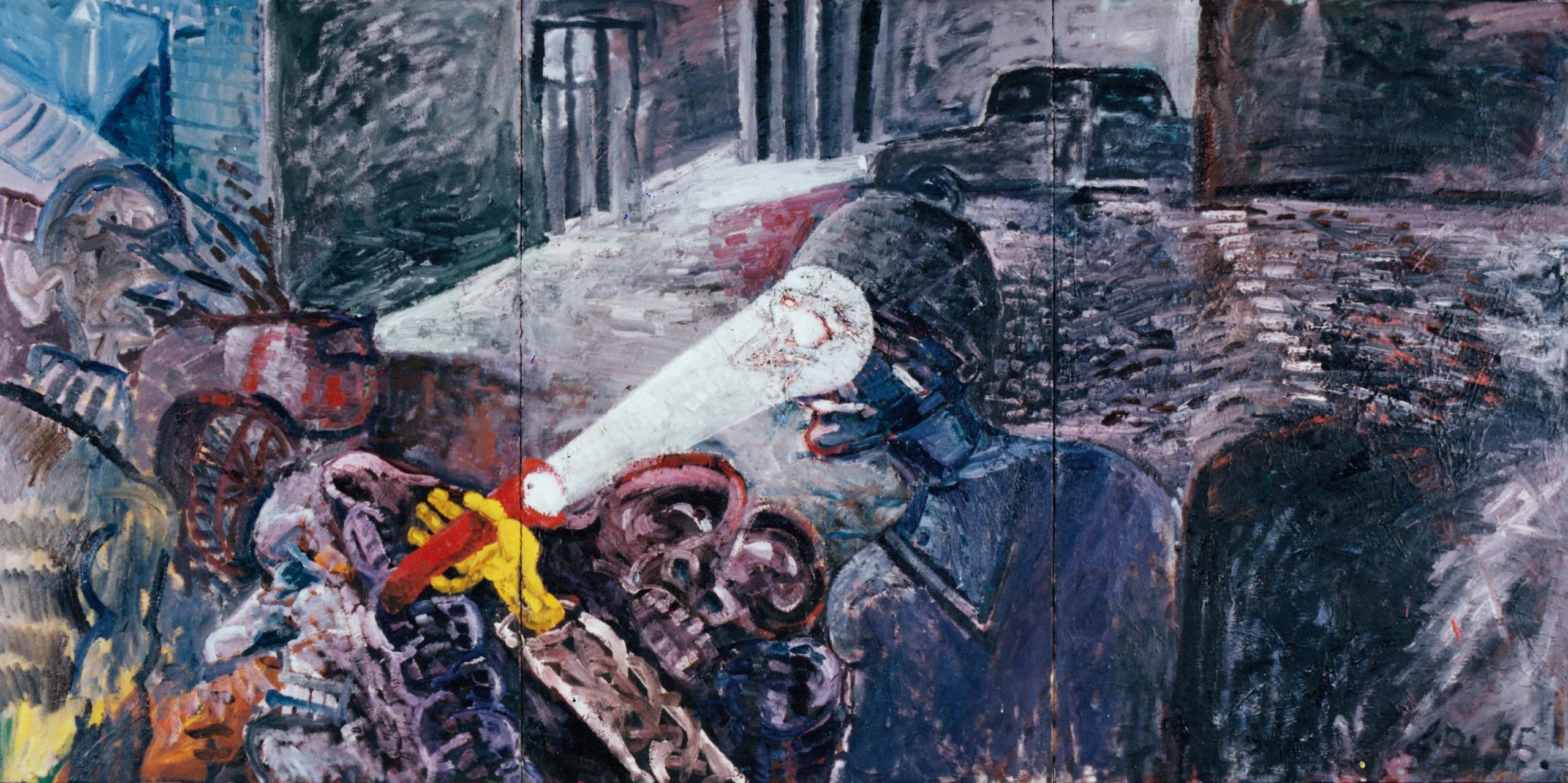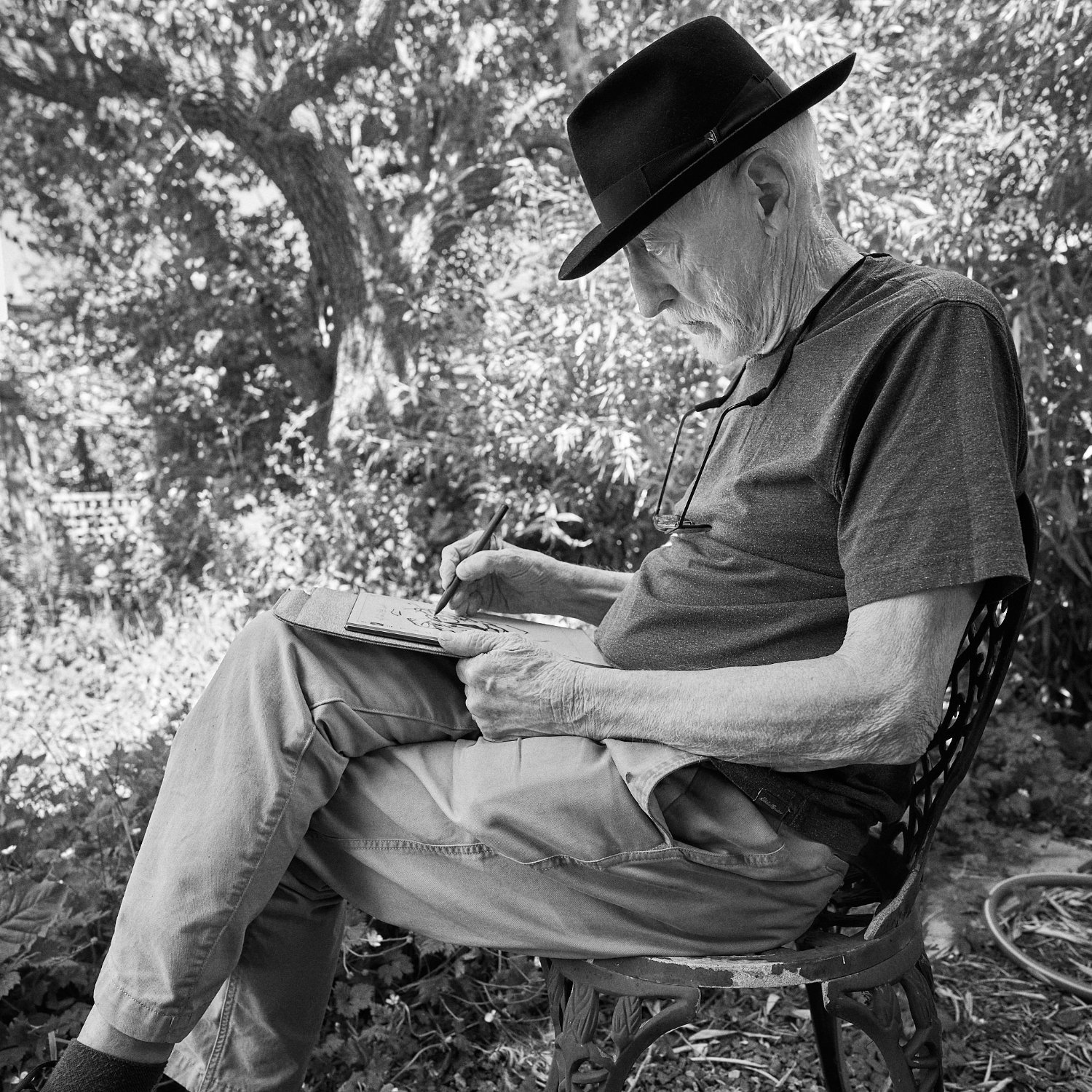Lance Austin Olsen (born 1943) is a Canadian artist and composer based in Victoria, British Columbia. His artwork spans over six decades, and several mediums including painting, printmaking, and sound.

Old Man, 1964, lithograph, 30 x 22 inches
Early life & education
In 1958, when Olsen was 15 years old and struggling at a London grammar school, his art teacher Jack Elvin asked “…of course you are going to art school, Olsen?”. Elvin arranged an interview between Olsen and a friend who taught at Camberwell School of Arts and Crafts in Peckham. Armed with “one big watercolour painting, some scribbly drawings, and absolutely no idea what I was doing” Olsen was accepted at one of the finest art schools in the UK.
Camberwell’s staff of working artists included several prominent names from the British art world, including Euan Uglow, Howard Hodgkin, RB Kitaj and, of greatest influence to the young Olsen, Frank Auerbach.
“I would creep into Auerbach’s classes and listen to his talks on painting and drawing, and what he thought about a life dedicated to this work….and it set a fire in my mind.”
Early career
Upon graduating from Camberwell Art School in 1965, Olsen secured a job in an advertising agency. He quickly realized that he did not have any desire for commercial art, and left after one week. Olsen took a job as a builders labourer, moving from job to job, while continuing to work on developing his art practice late at night.
Olsen married in 1968, and relocated with his wife to Western Canada.

Aftermath, 1978, oil on canvas, 6 x 8 ft

The Anthropic Principle, 1981, oil on canvas with glass eyes, 60 x 40 inches
1968-1990
Olsen’s paintings from 1968-1990 focused on experimental figuration, loosely rooted in the thick, highly tactile oil paint surfaces of his instructor, Frank Auerbach. His works from this period were often interpreted as political in nature, but that was not Olsen’s intent. “I viewed the works as footprints and evidence of my day to day life”.
In 1991, Olsen exhibited Butchers Apron, Butchers Hook (Open Space Arts Society, Victoria BC, Canada), a series of entwined figure tableaus rendered in large-scale oil on paper works measuring 5 x 10 feet each. Olsen recalls walking around the monumental installation and suddenly realizing that he had “said all that I had to say with this mode of working”.

Nightblindness, 1991-95, oil on canvas, 60 x 120 inches
1990-1996
In stark contrast to Olsen’s previous decades working with the human figure, the 1990s brought constant experimentation with new mediums and subject matter, beginning with an ongoing series of large ocean triptychs, and obsessively layered drypoint engravings titled The Garden of Cellular Indecision.

Lost At Sea 1, 1990s, oil and caulking on wood panel, 48 x 48 inches

portrait by Jamie Drouin
1997 to today
In early 1997, Olsen met fellow Victoria-based artist Jamie Drouin and developed a mutual interest in experimental music. The two artists co-founded Infrequency in 2001 as a conduit for publishing their collaborative works in audio, and Olsen’s graphic notation scores.